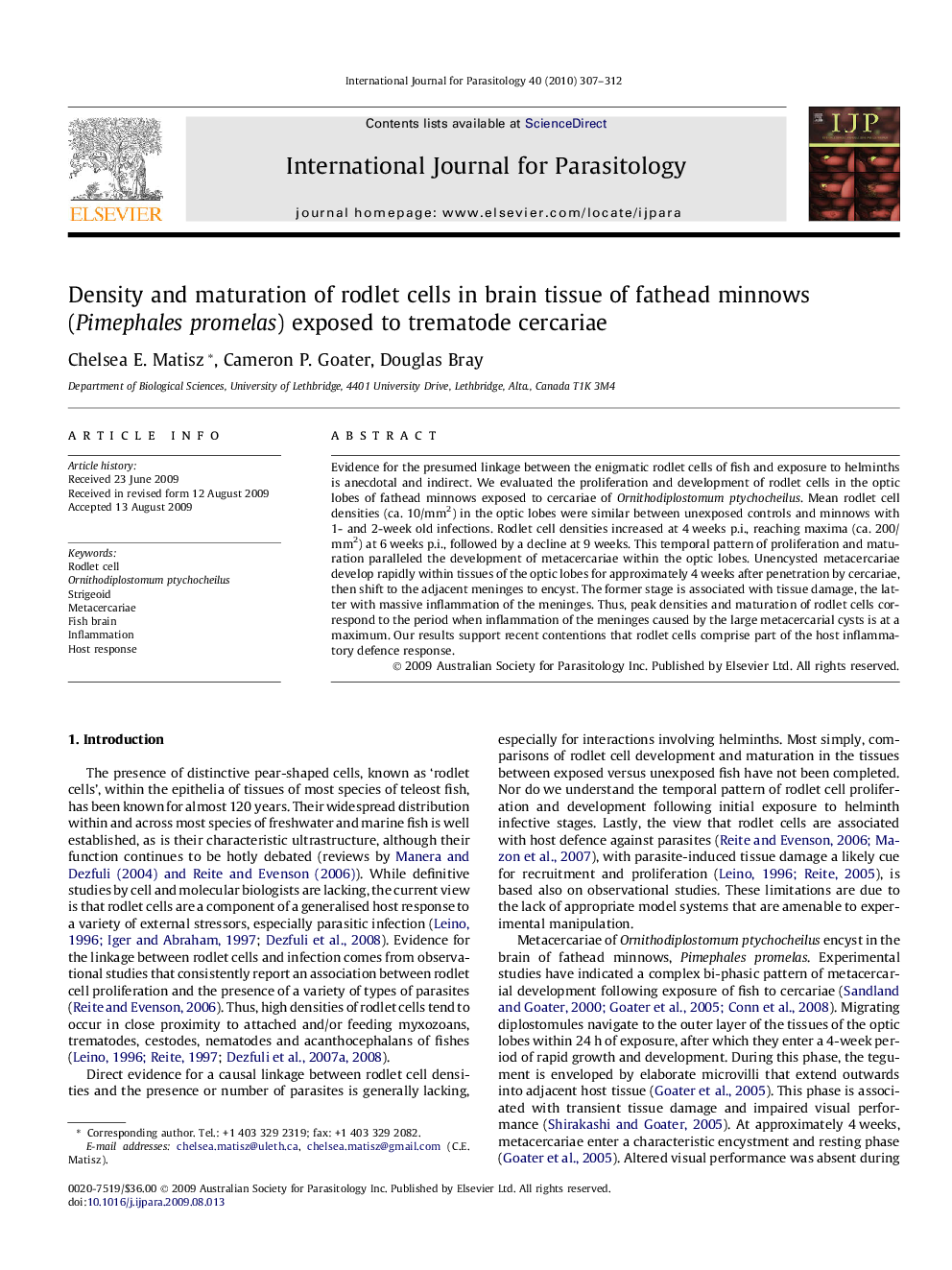| Article ID | Journal | Published Year | Pages | File Type |
|---|---|---|---|---|
| 2436596 | International Journal for Parasitology | 2010 | 6 Pages |
Evidence for the presumed linkage between the enigmatic rodlet cells of fish and exposure to helminths is anecdotal and indirect. We evaluated the proliferation and development of rodlet cells in the optic lobes of fathead minnows exposed to cercariae of Ornithodiplostomum ptychocheilus. Mean rodlet cell densities (ca. 10/mm2) in the optic lobes were similar between unexposed controls and minnows with 1- and 2-week old infections. Rodlet cell densities increased at 4 weeks p.i., reaching maxima (ca. 200/mm2) at 6 weeks p.i., followed by a decline at 9 weeks. This temporal pattern of proliferation and maturation paralleled the development of metacercariae within the optic lobes. Unencysted metacercariae develop rapidly within tissues of the optic lobes for approximately 4 weeks after penetration by cercariae, then shift to the adjacent meninges to encyst. The former stage is associated with tissue damage, the latter with massive inflammation of the meninges. Thus, peak densities and maturation of rodlet cells correspond to the period when inflammation of the meninges caused by the large metacercarial cysts is at a maximum. Our results support recent contentions that rodlet cells comprise part of the host inflammatory defence response.
Graphical abstractFigure optionsDownload full-size imageDownload high-quality image (217 K)Download as PowerPoint slide
